Sleep Training Baby – The Ultimate Guide
Everything you want to know about sleep training baby and more. You’ve got questions and we have answers. We’ve personally interviewed and worked with some of the top sleep experts in the country and this guide is meant to help you and your baby and a peaceful night’s rest. We cover the most popular sleep training techniques and answer all of your most pressing questions when it comes to sleep training your baby. Let’s dive in!
Table of Contents
Sleep Training Baby – What Is Sleep Training?
- Is Sleep Training Synonymous with Crying It Out?
- Will My Baby Learn to Sleep Without Training?
- How Do I Teach My Baby to Self Soothe?
- Baby Sleep Training Methods – Do Pediatricians Recommend Sleep Training?
- Cry It Out Sleep Training – Do babies really need sleep training?
- Letting Baby Cry It Out Has Different Meanings
Sleep Training Baby Won’t Stop Crying – Is Crying Out Bad for Baby?
Sleep Training Baby – What Is Sleep Training?

Sleep training – also known as sleep teaching or sleep-learning – is the process of helping your infant learn how to fall asleep and stay asleep. There are many experts and parents speaking for or against various sleep-training techniques.
The benefits of sleep training a baby can be substantial: Everyone in the household will be well-rested, and sleep is essential to a baby’s development. A landmark 2007 study from the National Institute of Health suggests that critical brain-development periods are dependent on adequate sleep.
Ferber may the most well-known sleep trainmen expert, advocating the “cry it out” method, but he’s not alone. Pediatrician Marc Weissbluth, author of Healthy Sleep Habits, Happy Child, says that crying may be a necessary part of helping some children develop healthy long-term sleep habits.
Sleep expert Jodi Mindell, author of Sleeping Through the Night: How Infants, Toddlers, and Their Parents Can Get a Good Night’s Sleep, is often called a kinder, gentler Ferber. Her “basic bedtime method” is a variation of Ferber’s classic, progressive-waiting technique.
In their book On Becoming Baby Wise, pediatrician Robert Bucknam and co-author Gary Ezzo advise against feeding babies on demand around the clock and instead, advocate a parent-led feeding, wake, and sleep schedule. Their method involves following a strict nap and sleep schedule and putting your baby down while still awake so she can learn to soothe herself to sleep. This means there will be some crying, especially at first, as your baby adjusts to your schedule.
It’s a good idea to speak with your pediatrician before you start any sleep training regimen. For example, if your child is gaining weight slowly or was a preemie, he may not be ready to drop a nighttime feeding and may need an adapted sleep-training schedule.
Is Sleep Training Synonymous with Crying It Out?

Sleep training — colloquially known as the “cry it out” technique — refers to any system where you leave the baby in his crib on his own at the start of the night and let him fall back to sleep on his own if he wakes during the night.
The name refers to the fact that if you do this, your baby will cry some but will eventually learn to fall asleep on their own. Pediatricians often recommend sleep training and many parents do it.
We all have brief awakenings at night as we pass between sleep cycles, but most of us don’t remember them. Babies have light and short sleep cycles of just 50-60 minutes, so their opportunities for waking are more frequent. If they fall asleep being nursed, cuddled, or rocked, they’ll expect those same conditions (also known as associations) to help them fall back asleep during their cycle transitions.
Not every baby has to cry it out in order to sleep train. Some babies will actually sleep train better using a different method. If you don’t like the idea of letting your baby cry without comforting them or it’s just not working for you, that’s okay. There are plenty of other ways for you to accomplish the same goal. You can try gentler, no-cry alternatives.
Every family is different, so you want to see which approach works best for you.
Every family is different, so you want to see which approach works best for you.
@ingeniousbaby
TWEET THISWill My Baby Learn to Sleep Without Training?
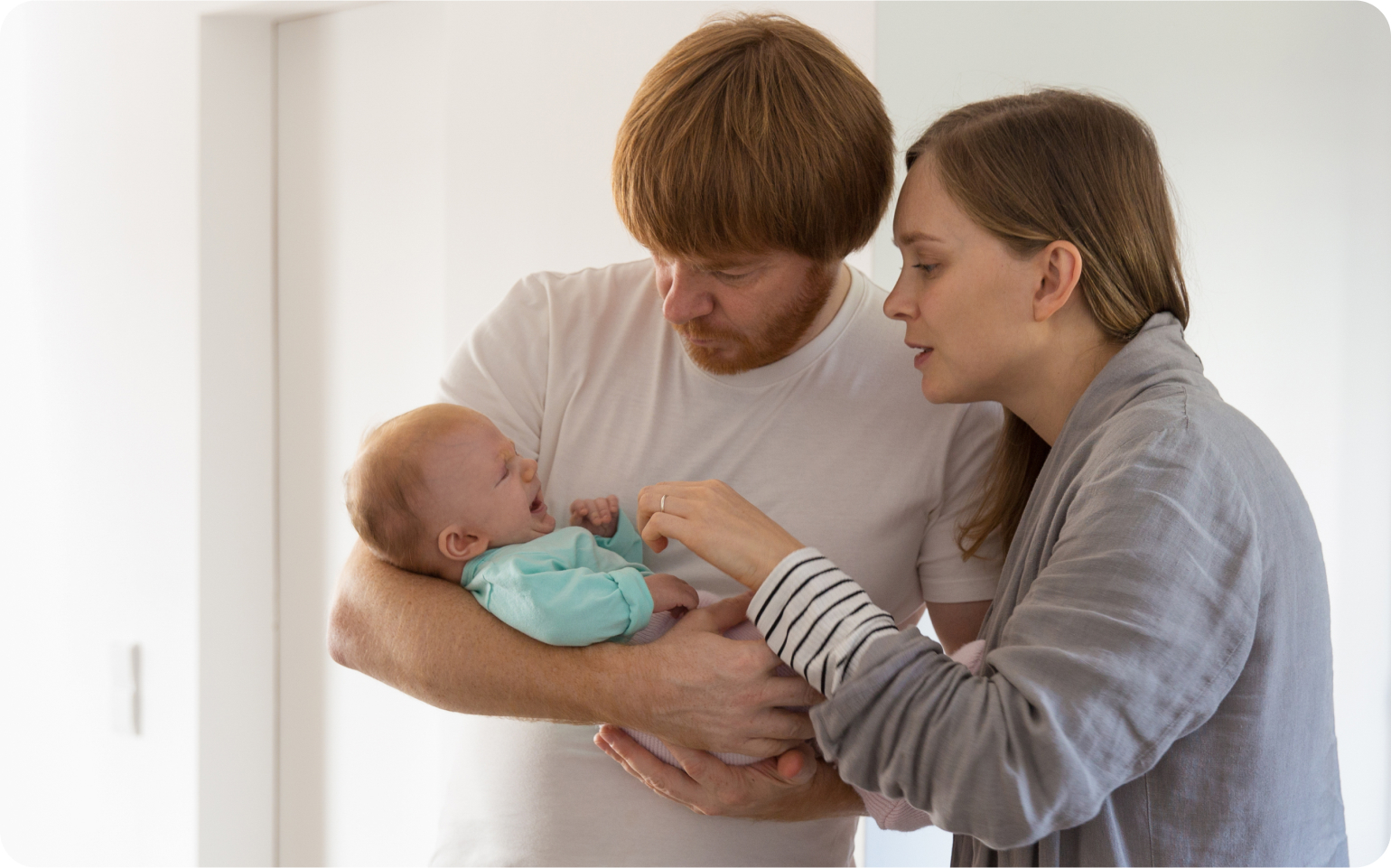
Studies show that sleep training is safe and effective. However, parents struggling to get their baby to sleep should first head over to their pediatrician’s office for help.
For some babies, the cry it out method is a non-starter. You can always start with another method first and see if it works. These include intermittent check-ins and the pick-up, put down method. Just know that some babies will do better with a variation of crying it out after trying other methods. Sometimes, a small amount of crying is all your baby needs to soothe himself. Eventually, you will find the happy medium where your baby cries just long enough without intervention.
Infuse the importance of sleep with daily attention to it and you will likely have a happier, self-assured, less demanding, and more sociable child. And you just might get some more sleep yourself. Just make sure child has grown enough and can sustain good sleeps for periods of time.
How Do I Teach My Baby to Self Soothe?
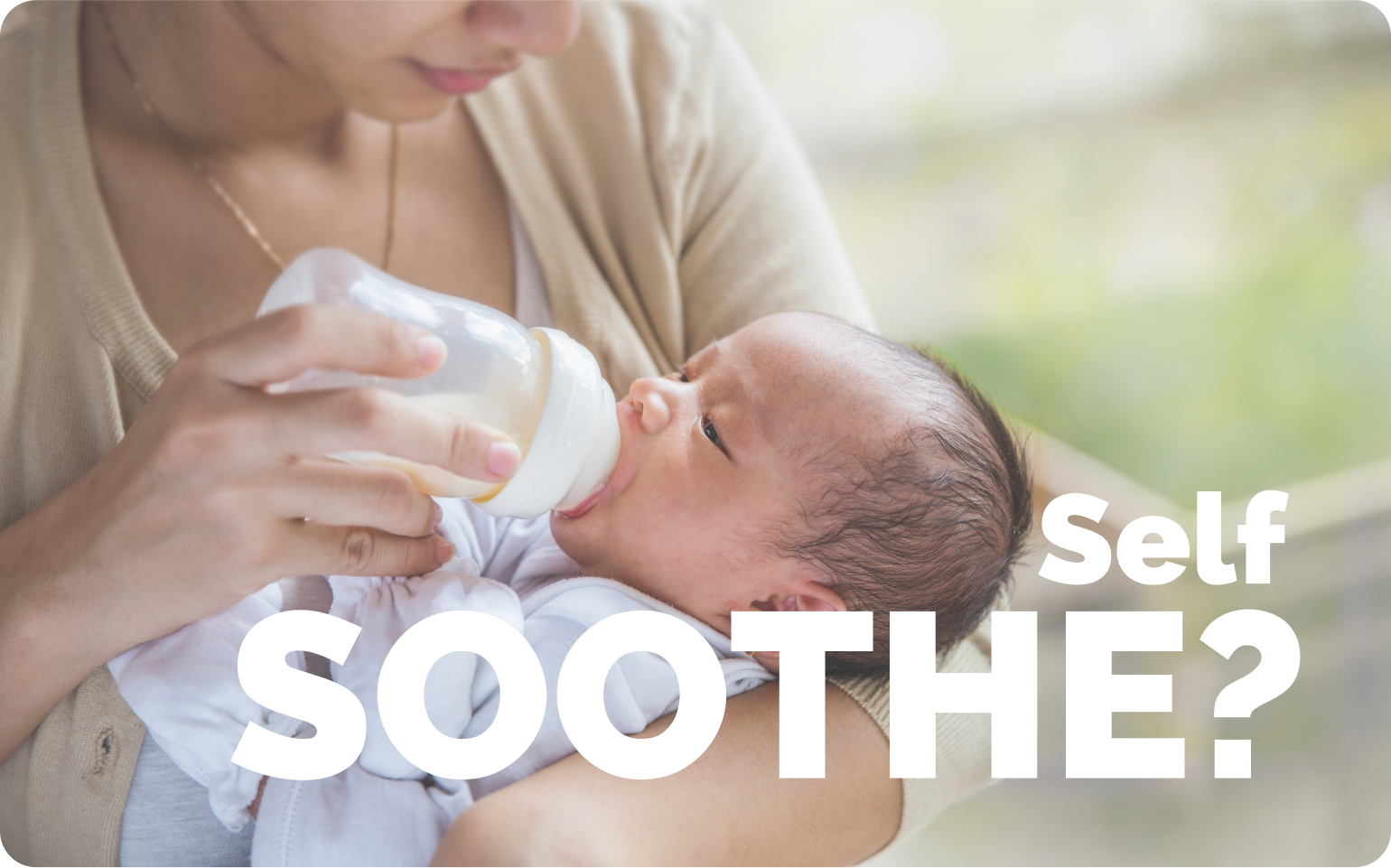
At 6 months babies have ability to entertain and soothe themselves. Prior to 6 months, it’s all about laying the groundwork for positive sleep habits with consistency and routine. You can start to teach your baby good sleep habits at birth, before the baby develops their own sleep habits that are counterproductive. Create a calming bedtime routine, such as a warm bath, followed by pajamas and a story. Do the routine consistently and end it by putting her in the crib while she’s drowsy, but still awake.
Move the feeding period before the bath. Babies often have trouble falling asleep by themselves if they just nursed or were fed a bottle. If they start to nod off while feeding, cut the routine bedtime routine down a bit so your baby can be put in the crib while she’s in this drowsy state. If your baby just won’t settle down at night, try changing bedtime to an earlier time. Finding the perfect combination requires experimentation. If something doesn’t work, try another routine until you find one that works for you and your baby.
Learning to self-soothe takes time, and some babies need a little longer than others. Be patient, stick to your calming bedtime routine, and remember that some days will be easier than others. Structured routines to help your baby become a sound sleeper.
Join the Ingenious Baby VIP Email Newsletter
JOINBaby Sleep Training Methods – Do Pediatricians Recommend Sleep Training?</h3

Pediatricians and experts agree that training isn’t suitable for newborns or any little ones under the age of four months old. Night wakings are important for newborns to get their nutritional and developmental needs met. So their cries should never be ignored. However, it’s never too soon to start implementing a positive bedtime routine to help signal little ones that sleepy time is coming.
By about four to six months of age, most babies can sleep for several hours at a time. The exact number of hours in a single stretch can vary greatly, anywhere from 4 to 10 hours. At this age, your baby has begun to settle into a more reliable, more adult-like sleep pattern and a consistent routine will help them more readily adapt it going forward.
Pediatricians typically want parents to know two important things about sleep training. First, behavioral sleep training is safe, and it has a net positive outcome when it comes to short-term sleep problems and maternal depression. Every situation is different, so do not hesitate to consult with your pediatrician.
Pediatricians may not recommend sleep training in specific cases. For example, when infants are too young physically or developmentally to successfully sleep train. Or whenever there may be underlying medical conditions that need to be addressed first; or when unapproved sleep training methods are being attempted.
Cry It Out Sleep Training – Do babies really need sleep training?
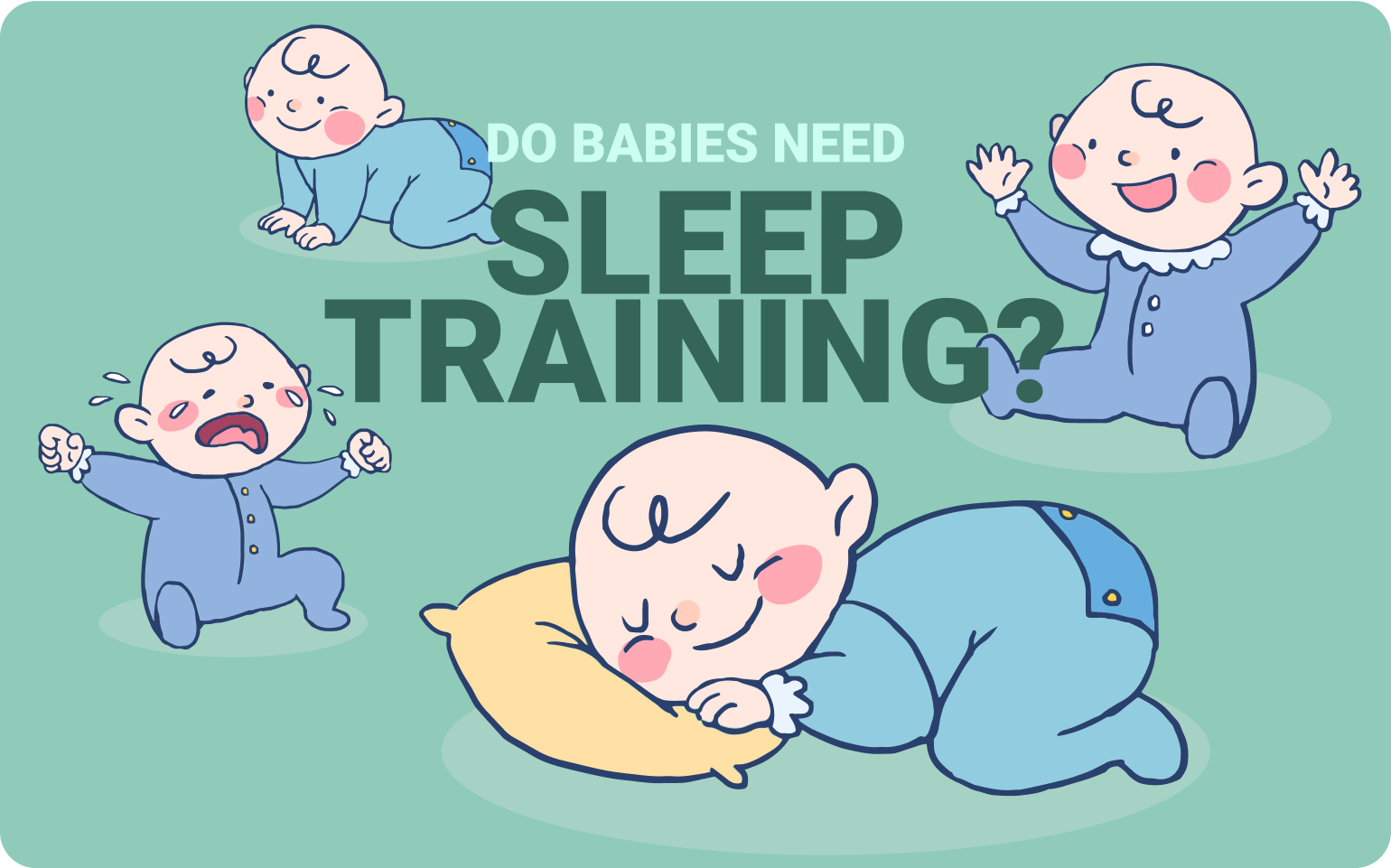
First, you should not let a newborn cry it out. Wait until they’ve grown and developed (usually by four to six months old). Often, they don’t know what’s wrong – and can’t differentiate that being allowed to cry at bedtime, as opposed to any other time, will benefit them. Instead, a newborn will just scream until they’re helped and comforted.
Once a baby is about four to six months old, a baby is developed enough that sleep training is an option. The most controversial training regimen is the cry it out method. Sometimes referred to as “controlled crying,” it is a generic term for letting your baby cry as they learn to fall asleep on their own.
There’s no evidence that sleep training harms a child. Studies have found that some “controlled crying” works and that babies who are sleeping in their own room from four to nine months old get better rest and sleep an average of 45 minutes longer each night than other children. They not only sleep longer but more soundly.
Training benefits moms and dads too, “on average, the cry-it-out method lowers rates of depression in parents,” according to Emily Oster, author of Cribsheet. “We have a lot of discussions about the impacts of sleep training, which all focus on the kids, and we ignore the fact that some of the reason for doing this is that not sleeping for parents is really hard. It causes them to be tired and depressed, and that can be dangerous.” Oster adds that studies focusing on maternal mood and marital satisfaction show definite benefits associated with the cry-it-out method, so it might even save you some tears in the end.
Letting Baby Cry It Out Has Different Meanings
When someone asks how long they should let their baby cry it out, it’s important to remember that “cry it out” has a wide variety of meanings. In fact, it covers a whole spectrum of sleep training methods:

Full extinction
After bedtime, your baby is allowed to cry and self-soothe to sleep. This can take some time, but it is generally about 30 minutes to two hours on the first night and gradually gets shorter from there.

Gradual extinction
Let your baby cry for a short period of time before checking in on them. Check-ins can be timed as often as you feel is necessary (for you and the baby), usually between 10 to 30 minutes. The full process can still take as little as one to two hours or longer.

Faded extinction
After putting your baby to bed, you let them cry for a few minutes before checking in on them a few times before fading out of the check-in process for the night. Check-ins can be timed however you want them. You might check every 10 minutes three or four times, then call it good for that night. The full process can still take as little as one to two hours or longer.

Controlled crying
You let your baby cry in small, controlled bursts before comforting them. Timing is up to the parent, though it’s usually done in 15-minute intervals that may fade or gradually increase.
While you need to weigh the pluses and minuses of every decision you make as a parent; ultimately, you have to go with your gut and choose something that works for you, your family, and most importantly, your baby.
Sleep Training Baby Won’t Stop Crying –
Is Crying Out Bad for Baby?
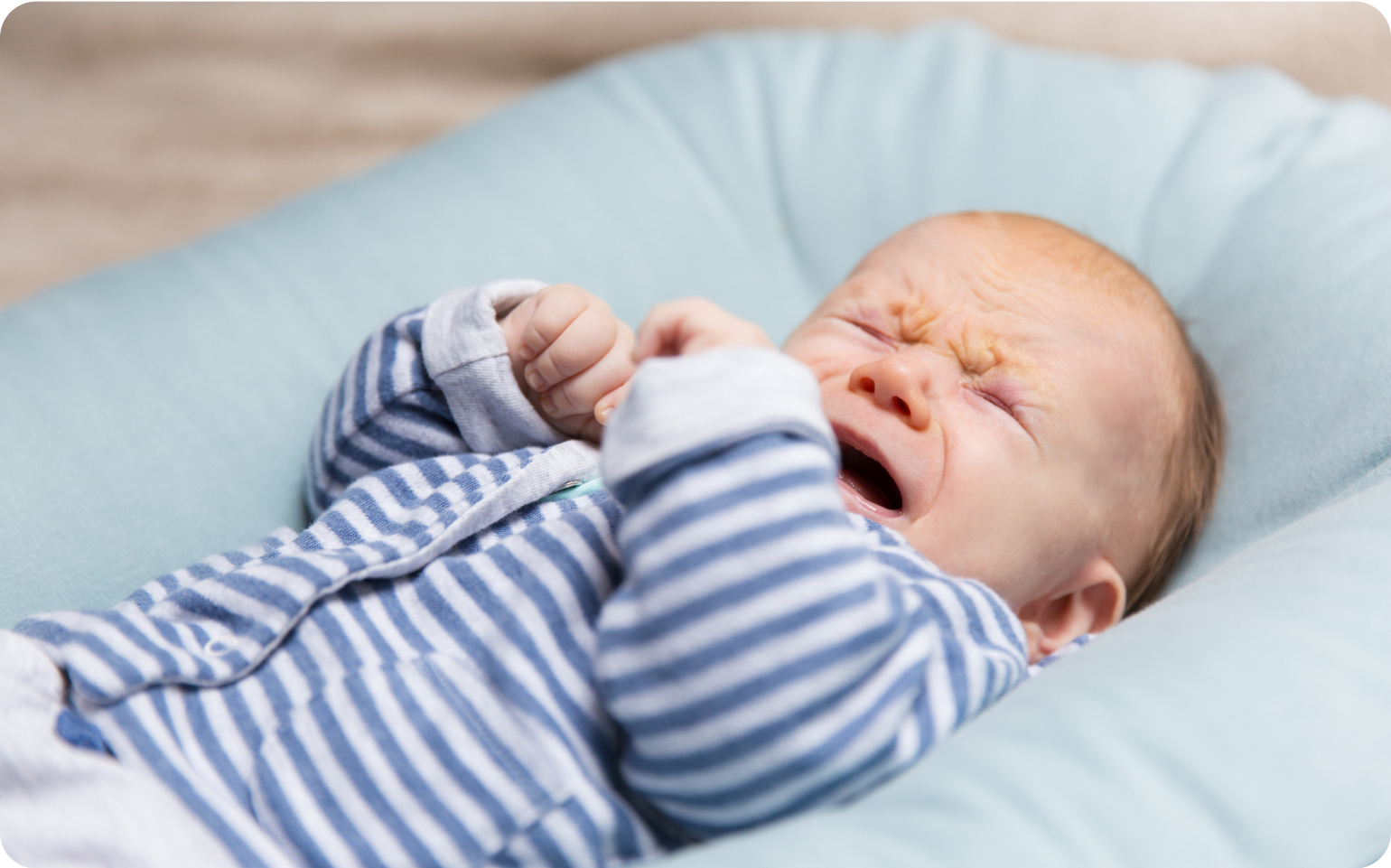
The web is filled with articles that will try to convince you that sleep training will have long-term consequences, that your baby will feel abandoned or fail to form an attachment to you or anyone else for that matter.
This idea comes, surprisingly, from the 1980s Romania, where thousands of children were living in orphanages with very little contact for months or even years. One of the things visitors noticed was the eerie quiet in these places. Babies didn’t cry, supposedly because they knew no one would come for them.
This is absurd, of course, just as much as it’s absurd to create a connection between these orphanages and the cry it out loud method. Sleep training does not leave the infants for months without any human contact. It doesn’t subject a child to the other types of physical and emotional abuse these orphans endured.
Consider an Australian study of 328 mothers whose seven-month-old babies were having problems sleeping. Approximately half were assigned to do a sleep-training regimen; the others were not. In the short term, the authors found significant benefits: Sleep training improved sleep for children and also lowered parental depression.
But they didn’t stop there.
They returned to evaluate the children a year later and five years later when the children were six. In this follow-up study, the researchers found no difference in emotional stability, behavior, stress, parent/child attachment, or conflict. Basically, the kids who were sleep trained were exactly like those who were not.
The argument continues to be theoretical, largely because all parents, families and infants are different. Broad strokes about any parenting technique are just that, generalizations. Few would argue that proper rest for parents and babies alike is a good thing, not only from the standpoint of physical and mental growth but emotional.
FREE Accessto my Sleep Tips
JOINFerber Sleep Training – Is the Ferber method cruel?

The most well-known cry it out method is graduated extinction, the Ferber Method. Pioneered by pediatrician and sleep expert Dr. Richard Ferber, the approach lets parents check in on their child at timed intervals, starting when the baby is about six months old. As the child begins to soothe himself, you extend the intervals.
It can be hard for a parent to do this. Instinctively, you want to soothe your children and respond to their cries. But this can create bad sleep habits, not only for the child but for mom and dad who can’t get a decent night’s sleep.
Letting your baby cry a little to help him fall asleep doesn’t make you a bad parent. There will be those parents who disagree with that, but that doesn’t make it true. As long as you approach sleep training (including crying it out) from a place of love and support and as an attempt to help your whole family, remember this important fact: Letting your baby cry doesn’t make you a bad parent. Every family is different, and what works for another family may not be the best approach for you.
When should you start sleep training your baby? At what age can you let a baby cry it out?
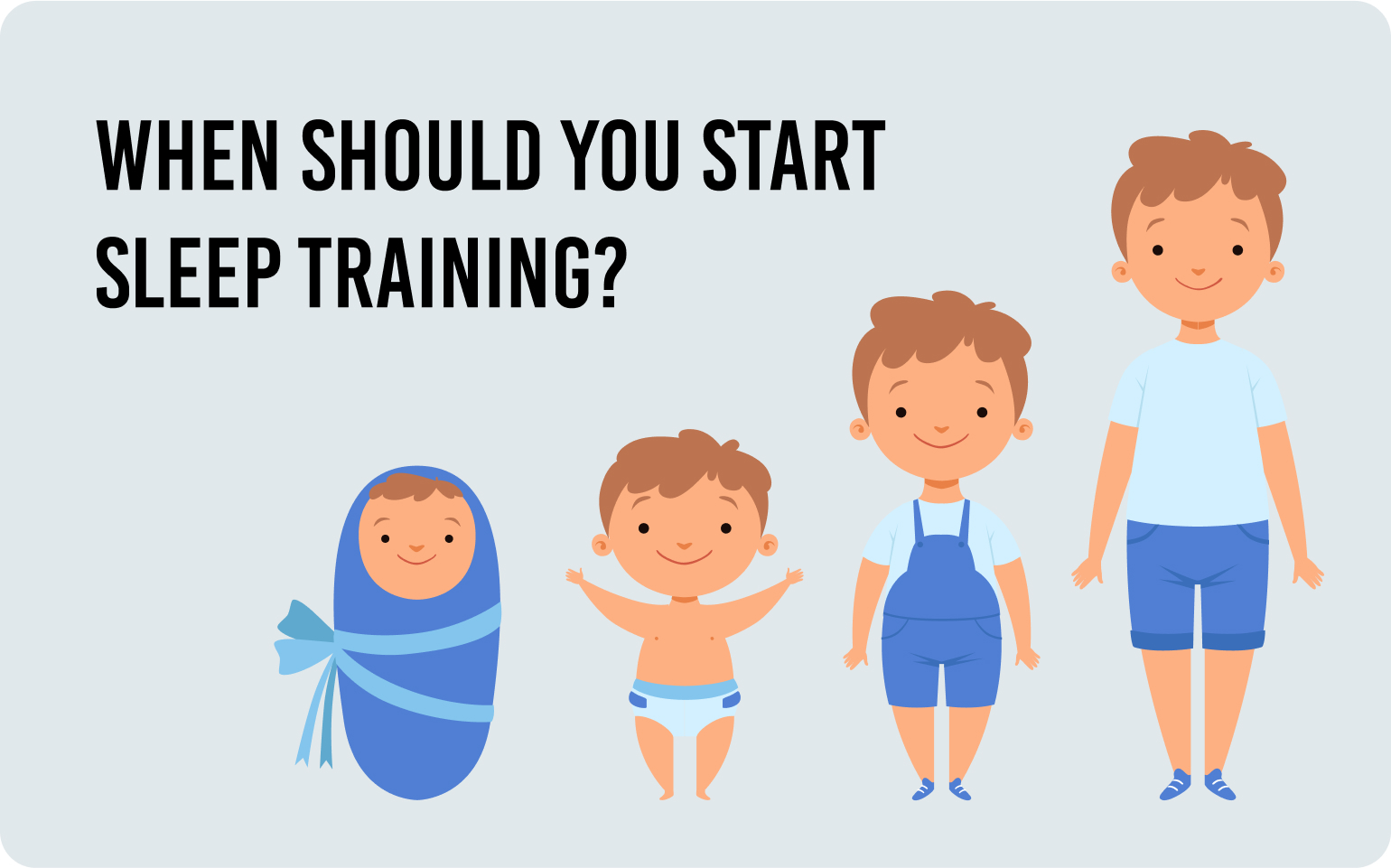
True sleep training doesn’t begin three or six months down the road, it begins when you come home from the hospital. All sleep problems can be prevented if parents are sensitive to their child’s need to sleep. Sleep patterns change over time for everyone and you may not be in tune with your child’s biological rhythms at first. But setting the tone from the time your baby comes home from the hospital will help everyone in the family get sufficient rest. This is the beginning of sleep training.
Once the natural sleep cycle has been recognized, parents can create a schedule for naps and bedtimes. It’s important to create a schedule around the baby’s natural sleep cycle. This is the most critical part. Babies shouldn’t be forced to sleep when they aren’t sleepy. Success only happens when a natural schedule has been developed for each individual baby.
Actual sleep training can begin as early as three to four months, depending on your child’s development and readiness.
Experts share that it may be more developmentally appropriate to wait until your baby is over four months old. Sleep training success is also dependent upon the recognition of a baby’s natural sleep pattern. Parents need to be observant of sleepy babies from the beginning. They should look for eye rubbing and a decrease in alertness. It’s important to address a sleepy baby immediately. Sleepy babies who are kept awake are going to be fussy all night.
4 Month-Old
Newborns have undeveloped circadian rhythms (biological clocks), which is why they often have their days and nights confused. Somewhere between four and six months is commonly recommended for sleep training. By then, most babies are taking daytime naps and sleeping longer at night.
Here are some of the signs to look for:
Past four months sleep regression
Rolling over on their own
Self-soothing skills mastered
No longer swaddled
Consistently gaining weight and have cut down on nighttime feedings
Sleep Training a 6-Month Old
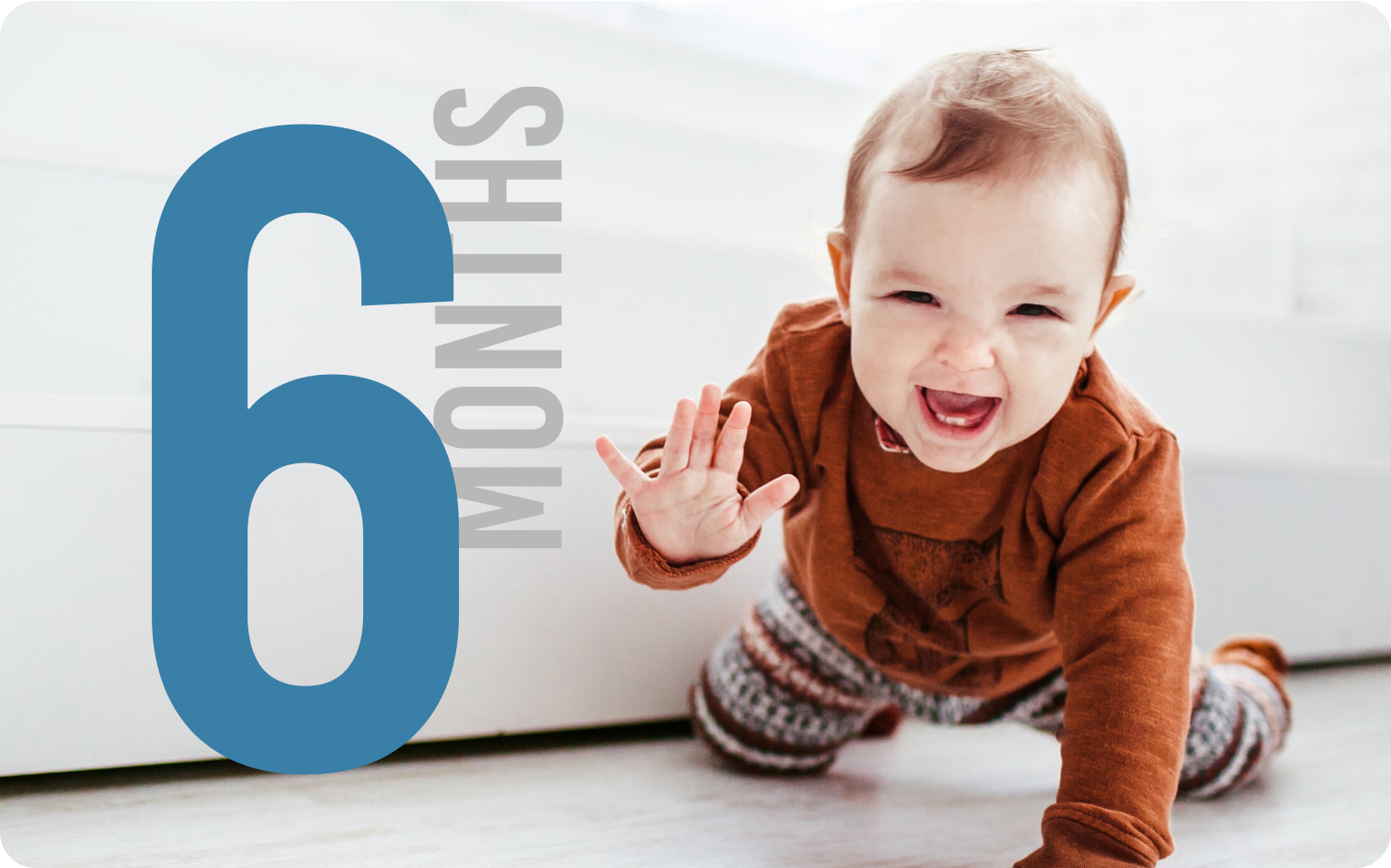
Many parents find that at six months old their baby is struggling with sleep. Babies at this age don’t necessarily wake up because they’re hungry. Everyone wakes up several times a night for brief amounts of time, including adults. As adults, we’ve learned how to put ourselves back to sleep each time. We’re so good at it that we often don’t even remember waking briefly. If your baby hasn’t mastered this skill, he’ll wake up and cry during the night even if he’s not hungry.
A bedtime routine will help your child wind down and get ready for sleep, and at this stage, your child will really begin to participate. This may include giving your baby a bath, playing a quiet game, getting your child ready for bed, reading a bedtime story or two, or singing a lullaby, make sure you do it in the same order and at the same time every night. Babies like having routines and schedules they can count on.
Keep your child on a consistent schedule throughout the day, including set times for bed and naps. If your baby naps, eats, plays, and gets ready for bed at about the same time every day, he’ll be much more likely to fall asleep easily.
Encourage your child to fall asleep on his own. To nap well and sleep through the night at this age, your baby has to learn to fall asleep on his own. Try putting him down before he nods off, so he can practice. If he cries, the next move is up to you. Do wait at least a few minutes to see if he’s really upset or just fussing a little before settling down.
9 Month-Old
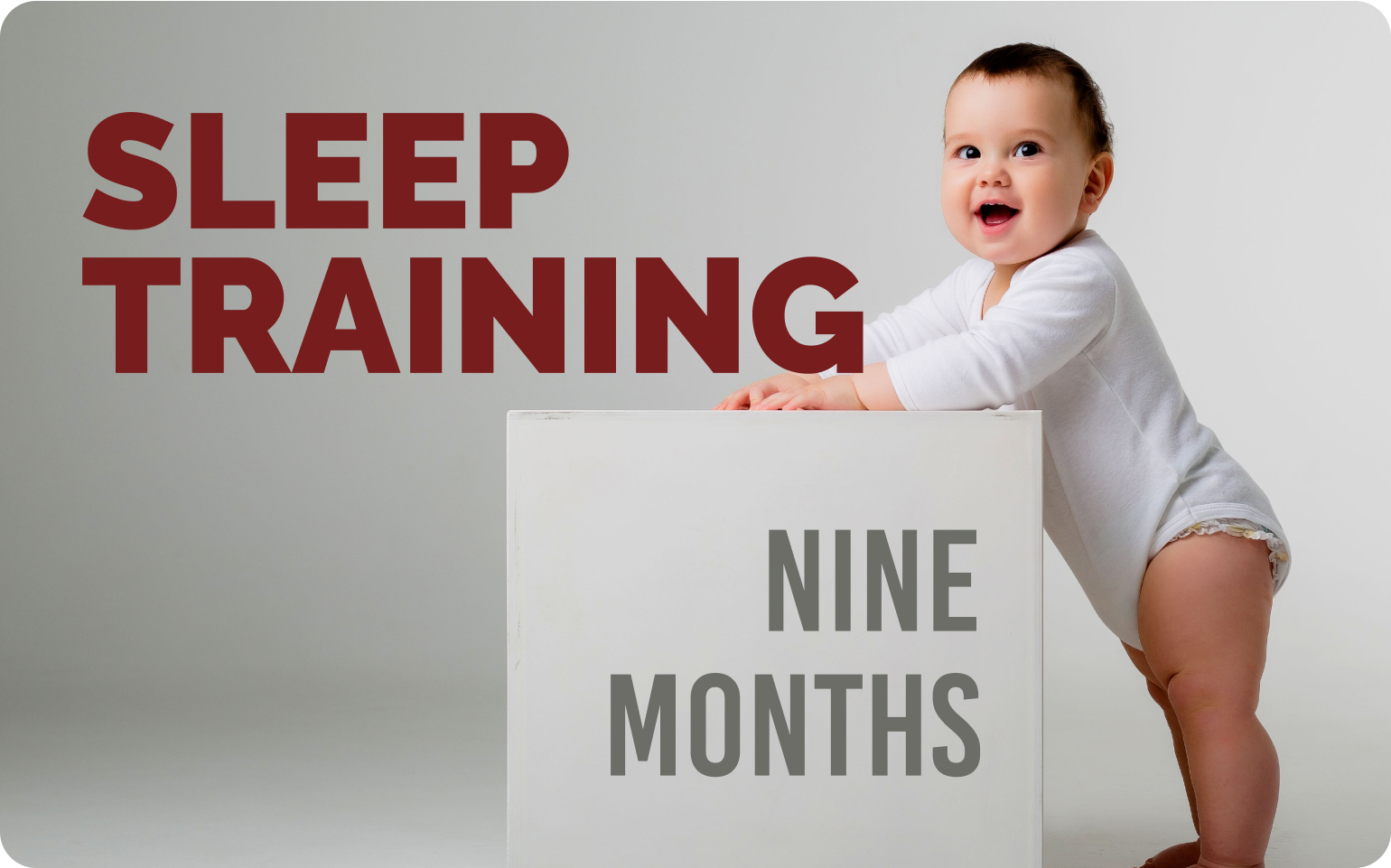
By nine to 10 months, babies are generally going to bed and waking up at the same time of day. These babies typically sleep about 14 hours a day, including two naps for one to two hours at a time.
Some pediatricians have noticed that babies this age can vary widely in their sleep patterns. This could be due to reaching new developmental milestones or the fact that babies are starting to get more of their calories from solid foods.
If your baby hasn’t yet settled into a sleep pattern that fits your family life, now might be a good time to try some type of sleep training. Sleep training methods can help your baby go to sleep more easily, sleep for longer periods at night, and keep more regular hours.
If your baby is sleeping for nine or 10 hours at night at this stage, it means she’s figured out how to settle back to sleep – a sign that you’re raising a good sleeper.
This is a time to continue working on the techniques you and your baby learned in the first nine months, including sticking to a consistent bedtime routine, making sure you baby has a regular schedule and giving your child plenty of chances to fall asleep on her own.
Get the latest articles, shows, and special offers
GET NOWSleep Training: How long does it take?

It all depends on the age of your baby and their readiness developmentally. For some moms and dads, these methods work just the way they’re supposed to. After a few nights and a few tears, their child sleeps contentedly through the night. For other parents, when the tears continue and the promised sleep doesn’t come, it’s time to try something else.
Experts say most strategies will take about a week to implement, and consistency is the key to making them work. Whatever you decide, remember that sleep training baby is different for everyone. You’ll always hear about a baby who was able to sleep through the night from day one, but don’t expect overnight miracles.
When the approach you choose is a good fit, it tends to work quickly. For easy-going babies, many parents report good results in as little as one to two weeks, whereas other methods may take a little longer. Those who advocate a cry it out method have stated that crying for extended periods is not traumatic for babies (although it certainly can be for parents, in my opinion), especially if the wake time for parent and child is much more enjoyable because everyone is well-rested.
For families who are dealing with multiple wakeups overnight, sleep training can decrease stress and improve moods. This will increase the quality time between you and your child.
First sleep training: How long did baby cry?
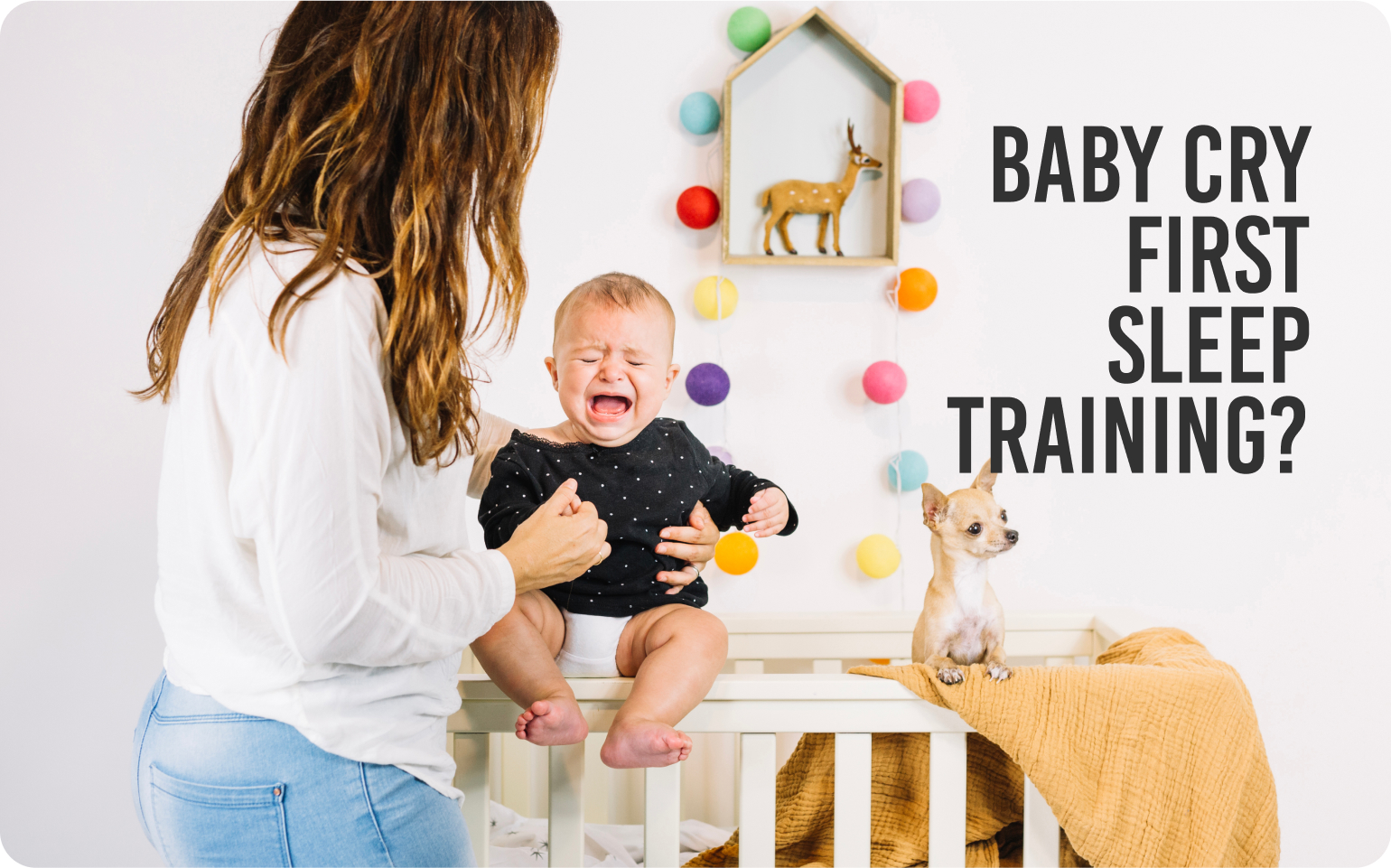
First make sure that your baby is ready for sleep training. They should be at least 14 pounds or 4 months old. People often think the cry it out method of sleep training involves leaving babies alone to cry for as long as it takes before they fall asleep. But “cry it out” (CIO) simply refers to any sleep training approach – and there are many – that says it’s okay to let a baby cry for a specified period of time (often a very short period) before offering comfort.
Just because most babies take at least a half of an hour (and up to two hours) to cry themselves to sleep doesn’t mean that you have to let them cry that long. How long you let your baby cry is ultimately your choice.
It’s okay to set restrictions on how long you let your baby cry. It’s also okay to decide that you’ll let your baby cry however long it takes.
Just remember that a single night’s worth of crying it out isn’t enough to prompt a lasting change. It’s going to take about a week to create that newer, better sleep habit.
And know that (after the first night) nights 3-5 will, according to several hundred surveyed parents, be the next worst. After that, things calm down significantly.
So, if you choose to use cry it out sleep training, own that choice. Set up how you want to use it. Then give it time to work.
CIO: How long is too long for a baby to cry?

How you go about CIO depends on your baby’s age, the philosophy you follow, and your sleep expectations. There’s no one-size-fits-all approach, and what works for one baby or family may very well not work for another.
Before sleep training using CIO, it’s a good idea to speak with your child’s pediatrician to get clarification on how much your baby should be sleeping at night for their age, whether or not they need a night feeding, and any other concerns you might have. As with all things parenting, try your best to not go too much by the book and to look at your individual child’s needs.
Whether you follow a full extinction or graduated extinction CIO plan, there will come the point where you might wonder: How long should I let my baby cry?
Unfortunately, there’s really no single answer to this question.
Nicole Johnson, sleep expert and author of the popular blog the Baby Sleep Site, says that parents should have a clear plan before starting.
The goal of CIO is to have a baby fall asleep without sleep associations, like being rocked by mom or dad. So, it’s tricky, since going in to check on your baby might involve rocking or other sleep associations.
Johnson says that parents need to decide together what’s “too long.” Instead of waiting for what feels “too long” in the moment, try to work out the details ahead of time.
And she also says to be aware of situations where a baby’s long spells of crying may actually signal that the baby needs help (illness, teething, etc.).
Should I leave my baby to self-settle?

Listening to a baby cry it out is stressful – even when it’s an intentional and planned part of sleep training. How long you let your baby cry depends on their age. In fact, there’s an optimal window of opportunity where letting your baby cry it out works.
Outside of that window? It’s not recommended – and it’s probably not going to work. The window of opportunity starts between four and six months of age and closes by 12 to 18 months old. Children in this age range can be allowed to cry it out if you so choose.
There is no rule on how long you should or shouldn’t let your baby cry it out. Surveyed parents report that cry it out takes between 30-120 minutes each night over the course of a week. Most babies also woke up significantly happier and better rested the next morning. Most books say that cry it out takes a few days – anywhere between 3-10 – depending on the source.
Based on a group of hundreds of parents who sleep trained:
Most babies cried for about 45-60 minutes that first night. Most babies also woke up significantly happier and better rested the next morning.
The second crying only lasted about 30 minutes.
For some babies, nights 3 through 5 were the worst. Crying lasted between 45 minutes and 2 hours.
Nights 6 and 7, the crying improved until it completely tapered off, leaving bedtimes a much happier affair where the baby would lay down and fall asleep unaided and without a fuss.
In most cases, crying it out was successfully done within one week.
Compared to other, gradual sleep training methods then? Letting your baby cry it out is a much faster option with dramatic results. However, it’s not for everyone.

Sleep Training Tips
No two babies are alike. Some babies are born good sleepers. For others, it’s a process that can take some time. Sleep training success is possible with a little bit of persistence and consistency, and that goes for daytime naps too. Training setbacks can occur when parents aren’t consistent or on the same page. One parent’s actions can sabotage an otherwise successful plan.
Stick to a consistent bedtime routine.
We can’t say it often enough: You and your baby will both benefit from a nightly bedtime ritual. You can give a bath, read a bedtime story, and tucking them in – or add a quiet game into the mix. Your baby should find the routine soothing. E.g., if she hates taking baths, move them earlier in the day. Or sing songs if she’d rather chew on a book than be read to. Children thrive on consistency and feel more secure when they know what to expect. Also, start your bedtime routine at a reasonable hour so your baby is not overtired. Otherwise, it will be harder for them to get to sleep.

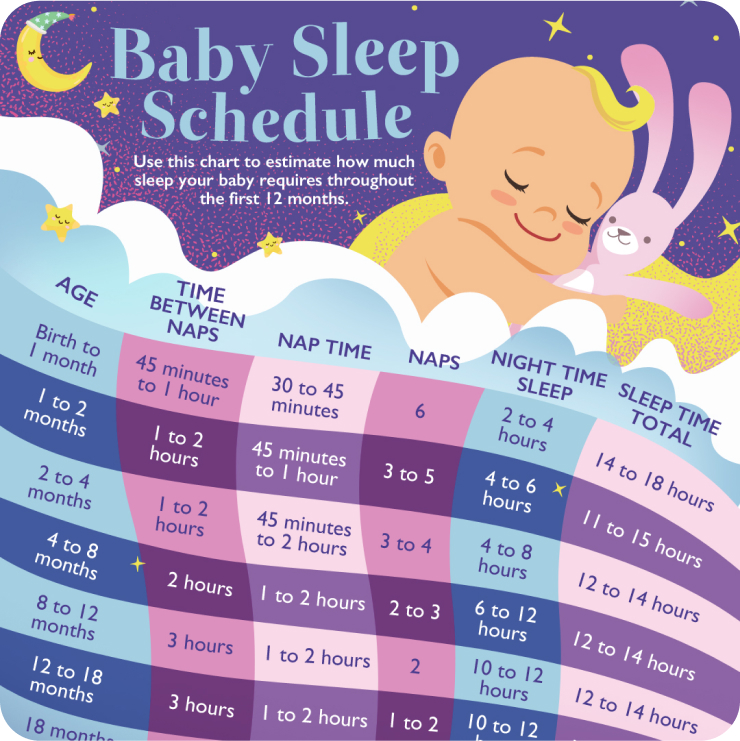
Make sure your baby has a regular schedule.
Bedtime may go more smoothly if you make an effort to keep the rest of your baby’s daily schedule consistent, too. If she naps, eats, plays, and gets ready for bed at about the same time every day, she’ll be much more likely to fall asleep without a struggle.
Give your child plenty of chances to fall asleep on her own.
Provide opportunities for your baby to practice sleeping independently. Instead of nursing or rocking your baby to sleep, let her practice falling asleep on her own by putting her in bed when she’s relaxed and drowsy. Otherwise, she’ll probably cry when she wakes up during the night and need your help to drop off again.

Join the Ingenious Baby VIP Email Newsletter
JOINNothing on this website is intended to be a substitute for professional medical advice, diagnosis, or treatment. Always seek the advice of your physician or another qualified health provider with any questions you may have regarding a medical condition. The contents of this website are for informational purposes only.


